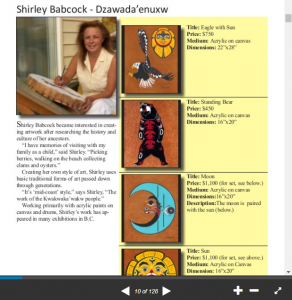In this post, I am weaving together three different resources. When teaching visual art education, sometimes it is useful to direct learners towards other artists as sources of inspiration or research. Sending students exclusively to sites like Behance, Instagram, or Pinterest runs the risks of overwhelmingly Western content. The following resources can help lead students to contemporary Indigenous Artists:
Digital Mural is a collection by Indigenous youth. The gallery includes visual images, audio, video, and digitally rendered work. A central theme to the collection is the creative responses to change, community, and resilience. You can focus the collection by selecting certain categories (ex: Figure, Indigenous Futurism, Land, etc.) or tags (ex: Digital, Illustration, Photography, etc.). Clicking on the individual works will provide information about the piece and/or artist.
The Indigenous Arts Collective of Canada seeks to empower Indigenous women and to create a safe and inclusive space to conserve and share cultural knowledge. In their purpose statement they say: “For Indigenous people, art is the very soul of our spirituality. It’s our every movement, dance and song – it is in every stroke of paint, every bead sewn, every feather placed.” The website has an Artist Directory, where you can browse by artist or by artform, and a Marketplace to support Indigenous artists.
The Secwepemc Artisan Catalogue (2013) showcases Indigenous artists in and near Kamloops, BC. Each artist has a bibliography and samples of their work, from beading to painted headphones.
References:
Community Futures Development Corporation of Central Interior First Nations. (2013, October 28). Secwepemc artisan catalogue. SlideShare. https://www.slideshare.net/npankewich/secwepemc-artisan-catalogue.
Digital Mural. (n.d.). https://digitalmural.ca/gallery.
Welcome. Indigenous Arts Collective of Canada. (2021, June 28). https://passthefeather.org/.


